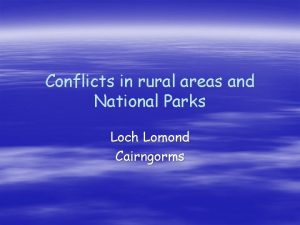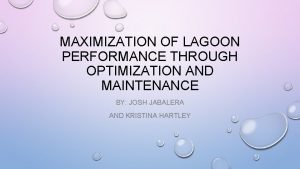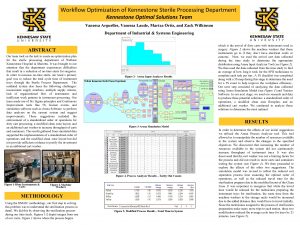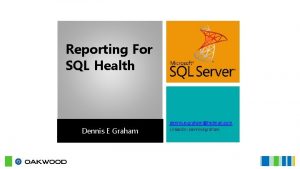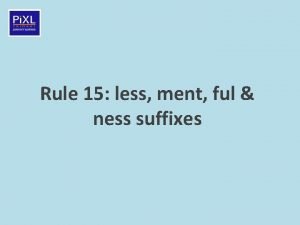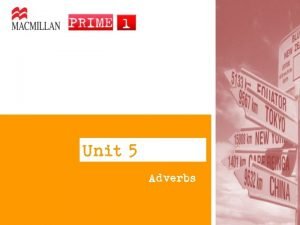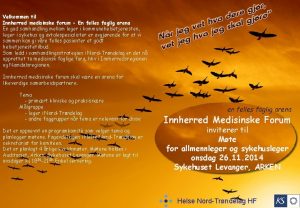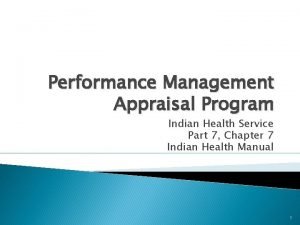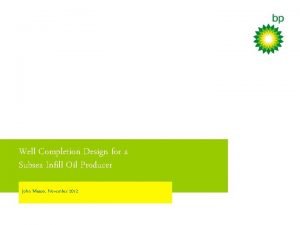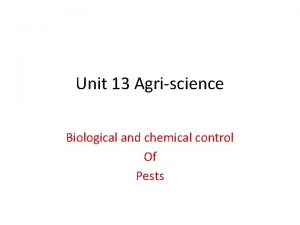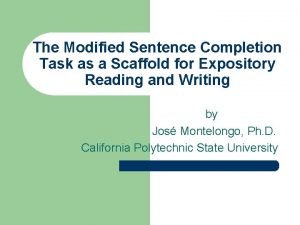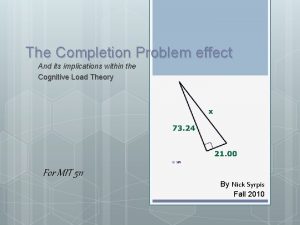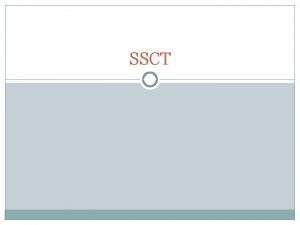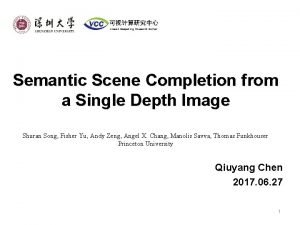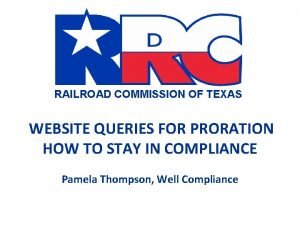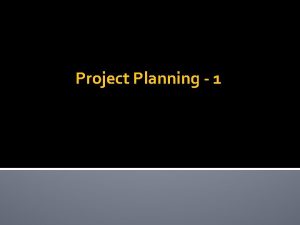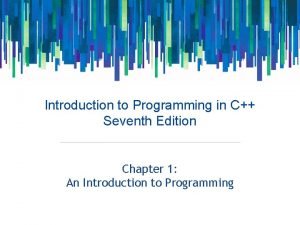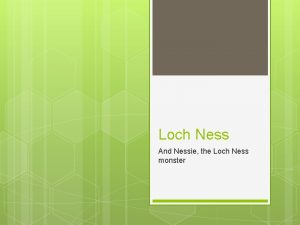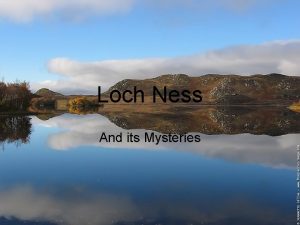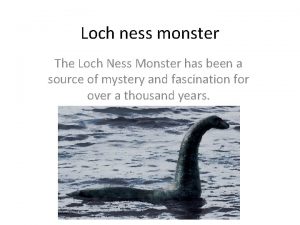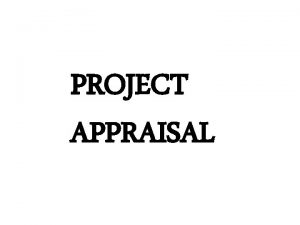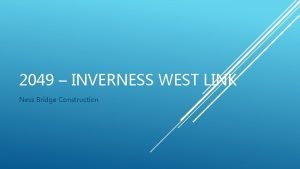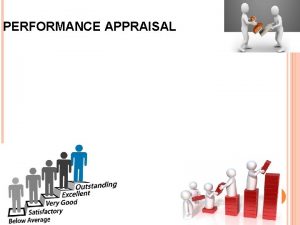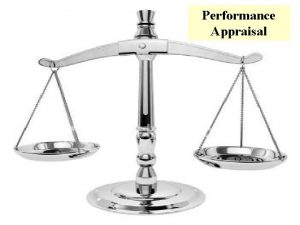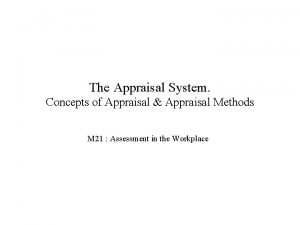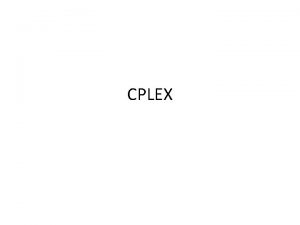Loch Ness Field Appraisal Program to Optimize Completion










































- Slides: 42

Loch Ness Field Appraisal Program to Optimize Completion Design Unconventional Resource Value of Information Case Study

Loch Ness Appraisal for Unconventional Completion Optimization FRAME BACKGROUND © 2011 -2016 Decision Frameworks Inc. All rights reserved. Do not copy. 2

Frame Background 1 Loch Oil has a solid acreage position in the Ness oil and gas shale play, with plans to drill 200 more horizontal wells on the undeveloped north and south flanks of their acreage. They have a base well design with numerous frac stages, and continue to see a wide range of initial and sustained production rate responses. Loch would like to better understand their horizontal wellbore contribution. Aside from frac effectiveness, which they test periodically with micro-seismic, they would like to know if there is a correlation between different rock types within the Ness horizontal wellbores and recovery – or is it simply a statistical play? Their thinking is that if “mostly great reservoir” is present in a given well, then they would add stages to tap into it. If “mostly moderate reservoir” is present, they would stay with the base well design, and if “mostly poor reservoir” was present, © 2011 -2016 Decision Frameworks Inc. All rights reserved. Do not copy. 3 they would either walk from the well if not drilled, or go ahead and complete it with the base stage and frac design. Loch’s team is debating the value of a variety of appraisal program options to optimize the frac stages of their upcoming 200 well campaign. This a difficult decision with many options, costs and potential benefits associated with each. Unfortunately, the economics of the Ness wells do not support high surveillance costs. Figure 1: Typical Ness Horizontal Well Design

Frame Background 2 Loch has developed Ness acreage with the following statistical results, when they developed with their base horizontal staged frac completion design: When attempted, for an additional 1. 0 M$ spend for the four additional stages, the following well stats resulted: ~20% of the wells appear to have “mostly good reservoirs” contributing and yield an expected NPV of 4 M$. reservoirs” contributing and yield an expected NPV of 2 M$, ~50% of the wells appear to have “mostly moderate reservoirs” contributing and yield an expected NPV of 0. 5 M$. reservoirs” contributing and yield an expected NPV of 1. 5 M$, and ~30% of the wells appear to have “mostly poor reservoirs” contributing and yield an expected NPV of -1. 3 M$. reservoirs” contributing and yield an expected NPV of -0. 3 M$. 4 additional stages to base design well ENPV = 0. 7 M$ Base completion design well ENPV = 1. 1 M$ = 0. 2 x 4 M$ + 0. 5 x 0. 5 M$ + 0. 3 x -1. 3 M$ = (0. 2 x 2 M$) + (0. 5 x 1. 5 M$) + (0. 3 x -0. 3 M$) As a result, without better indication of reservoir rock type along the lateral, the Loch team decided to develop using the base completion design. Alternatively, when Loch has added four stages to their base frac completion design, without better understanding through an enhanced formation evaluation program, like the one that they are now considering, the results have been disappointing. © 2011 -2016 Decision Frameworks Inc. All rights reserved. Do not copy. 4

Frame Background 3 There are those who wonder if Loch is “penny wise and pound foolish” by not collecting wellbore contribution and more thorough formation evaluation information. Currently, Loch runs gamma ray and resistivity open hole logs in all their wells prior to completion. The contribution appraisal program, should they embark on it, would consist of some combination of: (1) number of observations wells, (2) production and open hole logs to be run in them, (3) number of production wells in which to run extra open hole logs for reservoir type identification, and (4) type of extra open hole logs to be run in them. Observation wells would be producers and have a full suite of open hole logs run in them (GR, D, N, R, S). Once completed and on production, production surveillance tools would be run in them to attempt to discern if wells had mostly great, moderate or poor zones which could be correlated to the open hole logs. © 2011 -2016 Decision Frameworks Inc. All rights reserved. Do not copy. 5 Loch Ness acreage to be developed consists of 8 U. S. townships. Approximately half are on the Ness north flank and half are on the Ness south flank. The logical number of observation wells include: one to four in the north flank and or one to four in the south flank. There are indications that the two flanks may differ in reservoir characteristics.

Frame Background 4 Other key decisions in the appraisal program will be (1) how many of the non-observation, production wells to run extra open hole formation evaluation logs in, and (2) which extra logs to run, namely: neutron, density and or sonic, or some logical combination thereof? There are 200 wells to be drilled and three wells per pad. In total, there should be 66 pads. The team is thinking of many options: one well per pad, one well per every two pads, one well per every three pads, etc. Ultimately, it’s a matter of cost and accuracy of the team’s interpretation of reservoir quality and contribution from different rock types, from the appraisal program options. Figure 2: Reservoir Quality and Contribution Interpretation from Appraisal Program © 2011 -2016 Decision Frameworks Inc. All rights reserved. Do not copy. 6

Frame Breakout Instructions 1. Agree the problem statement. 2. Collect and categorize issues. 3. Agree the decision hierarchy. 4. Develop the uncertainty table. 5. Develop alternative appraisal strategies to consider, using the strategy table. Note: please do not look at the analysis background information on the following pages, nor the rest of the case handout solution during this breakout. © 2011 -2016 Decision Frameworks Inc. All rights reserved. Do not copy. 7

Loch Ness Appraisal for Unconventional Completion Optimization ANALYSIS BACKGROUND © 2011 -2016 Decision Frameworks Inc. All rights reserved. Do not copy. 8

Analysis Background 1 – Ideal Value and NPV Hits of Sub-optimal Completion Design Rock Quality / Fracture Effectiveness Along the Lateral Probability of Rock Quality/Frac Effectiveness Along the Lateral Ideal Completion Design NPV of an Ideal Development for a Given Lateral Reservoir Quality Mostly great reservoir 20% Add 4 frac stages to base design 4 M$ Mostly moderate reservoir 50% Stick with base design 1. 5 M$ Mostly poor reservoir 30% Walk 0 M$ Base Completion Design Impact If the team completes a well with the base completion design and that well truly has mostly great reservoir quality along its lateral, then the well will under perform its true potential of 4 M$, and only make 2 M$ (essentially a 2 M$ loss from the ideal NPV of 4 M$). If the team completes a well with the base completion design and that well truly has mostly poor reservoir quality along its lateral, then the well will be slightly uneconomic and yield an NPV of -0. 3 M$ (essentially a 0. 3 M$ loss from the ideal NPV of 0 M$, had it not been drilled and completed). © 2011 -2016 Decision Frameworks Inc. All rights reserved. Do not copy. 9

Analysis Background 2 – Ideal Value and NPV Hits of Sub-optimal Completion Design Rock Quality / Fracture Effectiveness Along the Lateral Probability of Rock Quality Frac Effectiveness Along the Lateral Ideal Completion Design NPV of an Ideal Development for a Given Lateral Reservoir Quality Mostly great reservoir 20% Add 4 frac stages to base design 4 M$ Mostly moderate reservoir 50% Stick with base design 1. 5 M$ Mostly poor reservoir 30% Walk 0 M$ Four Additional Frac Stages to the Base Completion Design Impact If the team completes a well with four additional frac stages to the base completion design, and: The well truly has mostly moderate reservoir quality along its lateral, then the well will make about what it would have with the base design, but the economics will be much worse due to the fact that four unnecessary extra stages were added to the completion. The NPV hit, or downward NPV adjustment, due to the four unneeded stages is 1 M$ (0. 25 M$ cost per stage). The well truly has mostly poor reservoir quality along its lateral, then the well will make about what it would have with the base design, but the economics will be much worse due to the fact that four unnecessary extra stages were added to the completion. The NPV hit, or downward NPV adjustment, due to the four unneeded stages is 1. 3 M$. (Essentially a 1. 3 M$ loss from the ideal NPV of 0 M$, had it not been drilled and completed). © 2011 -2016 Decision Frameworks Inc. All rights reserved. Do not copy. 10

Analysis Background 3 Appraisal Strategies to be Evaluated © 2011 -2016 Decision Frameworks Inc. All rights reserved. Do not copy. 11

Analysis Background 4 Appraisal Program Costs © 2011 -2016 Decision Frameworks Inc. All rights reserved. Do not copy. 12

Analysis Background 5 Appraisal Program Reliabilities Little Sister Appraisal Cost) Twin Sister Appraisal (17. 9 M$ © 2011 -2016 Decision Frameworks Inc. All rights reserved. Do not copy. Cost) 13 (31. 1 M$

Analysis Background 6 Appraisal Program Reliabilities Half Sister Appraisal Cost) (31. 75 M$ © 2011 -2016 Decision Frameworks Inc. All rights reserved. Do not copy. Big Sister Appraisal 14 (50. 3 M$ Cost)

Analysis Background 7 Appraisal Program Reliabilities Big Mama Appraisal Cost) (161. 6 M$ © 2011 -2016 Decision Frameworks Inc. All rights reserved. Do not copy. 15

Analysis Breakout Instructions 1. Update the uncertainty table to reflect the appraisal strategies. 2. Set up the decision and risk timeline for the evaluation structure. 3. Determine the value of the Twin Sister appraisal strategy. 4. Develop the confidence plots vs. cost for all appraisal strategies. 5. Develop the trees and confidence plots versus per added value on a per well basis for each appraisal program. 6. Summarize insights and make a recommendation. © 2011 -2016 Decision Frameworks Inc. All rights reserved. Do not copy. 16

Loch Ness Appraisal for Unconventional Completion Optimization PROBLEM FRAME © 2011 -2016 Decision Frameworks Inc. All rights reserved. Do not copy. 17

Appraisal Strategy Evaluation Workflow Frame the Problem - Solicit divergent thought, understand project focus, options & uncertainties Analyze the Impact – Characterize the risks / uncertainties & evaluate their impact on each option Follow “VOI” workflow - For each key uncertainty: - Quantify uncertainty - Alt. hypotheses - No more / current info state - 100% reliable info - Info reliability -Value of imperfect Info -Sensitivities & confidence plots © 2011 -2016 Decision Frameworks Inc. All rights reserved. Do not copy. 18

Problem Statement Should we measure the reservoir quality and contribution along the wellbores in the Ness field to optimize the frac stages and completions in future wells? Key questions the evaluation needs to answer: How well can different appraisal programs help us discern reservoir quality and contribution of the laterals across the field? Does more data and cost justify itself with higher reliability of interpretation? What measurement tools are worthwhile to run in either the observation wells and or development wells? What is the optimum balance of observation wells and data versus open hole formation evaluation logs in development wells? © 2011 -2016 Decision Frameworks Inc. All rights reserved. Do not copy. 19

Issues © 2011 -2016 Decision Frameworks Inc. All rights reserved. Do not copy. 20

Decision Focus (Decision Hierarchy) © 2011 -2016 Decision Frameworks Inc. All rights reserved. Do not copy. 21

Evaluation Alternatives (Uncertainty Table) © 2011 -2016 Decision Frameworks Inc. All rights reserved. Do not copy. 22

Appraisal Options (Strategy Table) © 2011 -2016 Decision Frameworks Inc. All rights reserved. Do not copy. 23

Appraisal Strategy Development 1 © 2011 -2016 Decision Frameworks Inc. All rights reserved. Do not copy. 24

Appraisal Strategy Development 2 © 2011 -2016 Decision Frameworks Inc. All rights reserved. Do not copy. 25

Appraisal Strategies Considered for Evaluation © 2011 -2016 Decision Frameworks Inc. All rights reserved. Do not copy. 26

Loch Ness Appraisal for Unconventional Completion Optimization PROBLEM ANALYSIS © 2011 -2016 Decision Frameworks Inc. All rights reserved. Do not copy. 27

Appraisal Evaluation Focus © 2011 -2016 Decision Frameworks Inc. All rights reserved. Do not copy. 28

The Oracle “Thinking” Tree © 2011 -2016 Decision Frameworks Inc. All rights reserved. Do not copy. 29

Different “Go Now without More Information” Options © 2011 -2016 Decision Frameworks Inc. All rights reserved. Do not copy. 30

Best “Go Now w/out More Information” Option is to Drill a Given Location with Base Completion Design The value of developing a given well location, without appraisal is 1. 1 M$, using a base completion design. © 2011 -2016 Decision Frameworks Inc. All rights reserved. Do not copy. 31

Value of 100% Reliable Appraisal Program, on a per Well Basis = 0. 5 M$ © 2011 -2016 Decision Frameworks Inc. All rights reserved. Do not copy. 32

Reliability of Twin Sister Appraisal to Discern Lateral Reservoir Quality Our uncertainty today and ability to interpret each possible truth with the appraisal program. Three new possible interpretations of our uncertainty after the appraisal program and the chance of each interpretation. © 2011 -2016 Decision Frameworks Inc. All rights reserved. Do not copy. 33

Reliability of Interpretation Expert Interview 1 Twin Sister Appraisal Prgm to Discern Lateral Reservoir Quality © 2011 -2016 Decision Frameworks Inc. All rights reserved. Do not copy. 34

Reliability of Interpretation Expert Interview 2 Twin Sister Appraisal Prgm to Discern Lateral Reservoir Quality © 2011 -2016 Decision Frameworks Inc. All rights reserved. Do not copy. 35

Value of Twin Sister Appraisal = 0. 22 M$, on a per Development Well Location Basis Twin Sister appraisal adds value by capturing the upside and adding stages to development locations where we interpret mostly great reservoir along the lateral. © 2011 -2016 Decision Frameworks Inc. All rights reserved. Do not copy. 36

Value of Twin Sister Appraisal = 0. 22 M$, on a per Development Well Location Basis Note: even when mostly poor reservoir along a given lateral is interpreted, Twin Sister appraisal suggests we still complete with the base design. Would we? © 2011 -2016 Decision Frameworks Inc. All rights reserved. Do not copy. 37

Appraisal Strategy Reliability Interviews and Results © 2011 -2016 Decision Frameworks Inc. All rights reserved. Do not copy. 38

Appraisal Strategy Confidence Plots © 2011 -2016 Decision Frameworks Inc. All rights reserved. Do not copy. 39

Appraisal Strategy Chance of Actual Plots Uncertainty Reduction Measure © 2011 -2016 Decision Frameworks Inc. All rights reserved. Do not copy. 40

Appraisal Strategy Comparison Chance of Poor Result w Good or Moderate Interpretation © 2011 -2016 Decision Frameworks Inc. All rights reserved. Do not copy. 41

Insights and Conclusions Only two of the appraisal programs, Half Sister and Twin Sister, add material value to the development program. Validation of the key assumptions and logic should be validated and considered for recommendation. © 2011 -2016 Decision Frameworks Inc. All rights reserved. Do not copy. 42
 Loch ness odjuret
Loch ness odjuret Rural broadband solutions in loch ness
Rural broadband solutions in loch ness Optimize reward program
Optimize reward program Winter lagoon optimization
Winter lagoon optimization Optimize service management
Optimize service management Sterile supply workflow
Sterile supply workflow Ola hallengren index optimize does not work
Ola hallengren index optimize does not work Ola hallengren index optimize does not work
Ola hallengren index optimize does not work Python optimize imports
Python optimize imports Optimize crm
Optimize crm Optimize plant availability
Optimize plant availability Tpms program completion form
Tpms program completion form Ness words
Ness words Elsa fayer seins
Elsa fayer seins Arnae ness
Arnae ness Ness окончание
Ness окончание With-it-ness classroom management
With-it-ness classroom management Sufixo ness
Sufixo ness Dangle flip flop thrust
Dangle flip flop thrust Prery
Prery Ripple effect in classroom management
Ripple effect in classroom management Ness
Ness Lene ness jensen
Lene ness jensen Monstruo lago ness
Monstruo lago ness Performance management appraisal program
Performance management appraisal program Gauss law in magnetism
Gauss law in magnetism Field dependent vs field independent
Field dependent vs field independent Field dependent vs field independent
Field dependent vs field independent Electric field and magnetic field difference
Electric field and magnetic field difference Waveguide cutoff frequency
Waveguide cutoff frequency Database field types and field properties
Database field types and field properties Field dependent definition
Field dependent definition Difference between electric field and magnetic field
Difference between electric field and magnetic field Well completion
Well completion Agriscience unit 13 completion answers
Agriscience unit 13 completion answers Sentence completion task
Sentence completion task Completion problems
Completion problems Ssct adalah
Ssct adalah Elfa, glha, ilja, _____, mlna
Elfa, glha, ilja, _____, mlna Suncg
Suncg Texas railroad commission query
Texas railroad commission query Adequate planning leads to the correct completion of work
Adequate planning leads to the correct completion of work The selection structure is the completion of
The selection structure is the completion of

